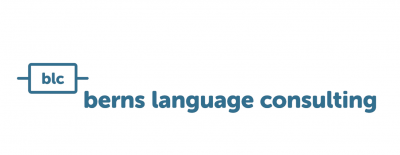Should you provide a guideline for your post editors? Why? Is one guideline sufficient for all texts? What should it contain? Since we can’t get the process around machine translation and post-editing out of our heads, we decided to address those concerns in this blogpost.
It depends on the quality expectations
Unfortunately, simply asking for “full post-editing” is far from enough. It is important to give the post-editor as much information as possible. This can be information about the expected machine translation result, or typical errors that can occur during post-editing. Also important: providing principles and methods of post-editing as well as a description of the purpose and expected quality of the text after post-editing. Post-editing guidelines are primarily intended to establish a common understanding of quality between client and contractor.
Thus, the preparation of post-editing guidelines also depends on these two main criteria:
- Expected output quality of the machine translation
- The client’s quality expectations of the post-edited text
The output quality depends largely on the engine used and how well it has been trained. An important argument for carrying out post-editing: post-edited segments are ideal for retraining.
The quality expectation of the post-edited text is basically a matter of client taste. Ideally, the quality of the final translated text should be oriented towards the purpose of the information. Clients must be clear about this when defining the desired target quality. This is not always the case. Here, post-editors can become consultants by working with the client to sharpen their quality expectations. The following examples show how strongly the quality expectation of post-editing depends on the type of information.
Fit for purpose or a little more?
Of course, training materials must be linguistically correct and neatly formatted as they will be are often presented, handed out and/or passed on. This type of text virtually brings with it the demand for high-quality post-editing results.
A support ticket that is intended to help find solutions, is clearly time-sensitive. As such, machine translation is preferred here and linguistic finesse is not the main focus. Nonetheless, post-editing is often necessary for this type of information in order to guarantee that it is conveyed correctly. Fit for purpose.
What does the post editing guideline say?
The post-editing guideline contains information on common machine translation errors in various types of information, as well as recommendations for action and instructions on how to deal with these error categories.
When designing a post-editing guideline, you can vary between generic and specific instructions.
Example of a more generic instruction for consistent use of terminology:
Correct any incorrect naming in the text and ensure consistent use of the preferred term.
Example of a more specific statement that takes into account a specific language pair and its linguistic peculiarities:
Translate the infinitive sentence “to be + infinitive” with future tense (EN – ES)
Guidelines show post-editors the way
How do you create a post-editing guideline and what do you need to look out for?
The following aspects should be taken into account when preparing post-editing guidelines:
- The language pairs that will be machine translated
- The MT engine used, the expected MT quality, and the associated frequently occurring error types
- The type of information and its purpose
- The target audience for the translated text
For our clients we usually prepare a comprehensive guideline with general aspects of post-editing in their environment as well as more individual guides for different types of information (or bundled into similar types of information), taking into account the particularities of the language pairs in terminological, structural and linguistic terms.
This is the concrete procedure we follow when creating post-editing guidelines for our customers:
- Determining the quality requirements of the customer
- How: Analysis of information types and their benefits
- Determining the quality level of the results of the MT language pair
- How: Machine translation of a representative sample text (per text type) and analysis of error types
- Creating the required post-editing guidelines according to the analysis results
And how about you?
Are you not yet completely satisfied with your machine translation results or are you planning to introduce a machine translation process with post-editing?
Would you like to offer your customers machine translation and post-editing services?
We are happy to support you in your plans and to help you set up a successful post-editing process- quickly. And, of course, we will also optimize your existing translation engines and find the right machine translation environment for your individual application.
So that your machine-translated texts are perfect- every time!
Image: Amirali Mirhashemian, Unsplash





